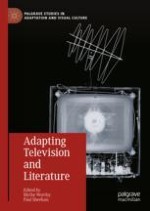2024 | OriginalPaper | Buchkapitel
11. Tracing Trans/National/Textual Limits in Jane Campion’s Top of the Lake: China Girl
verfasst von : Blythe Worthy
Erschienen in: Adapting Television and Literature
Aktivieren Sie unsere intelligente Suche, um passende Fachinhalte oder Patente zu finden.
Wählen Sie Textabschnitte aus um mit Künstlicher Intelligenz passenden Patente zu finden. powered by
Markieren Sie Textabschnitte, um KI-gestützt weitere passende Inhalte zu finden. powered by
